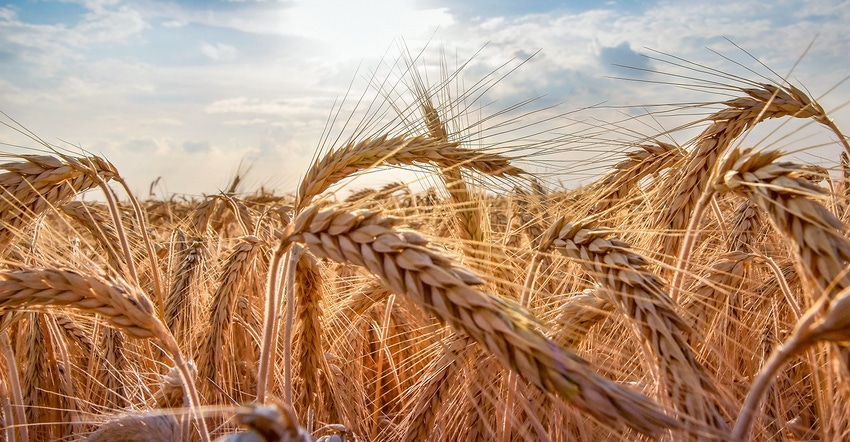
The July World Agricultural Supply and Demand Estimates report, published each month by USDA’s World Agricultural Outlook Board with help from the National Agricultural Statistics Service’s Crop Production report, typically does not have a lot of market surprises.
But it’s 2022 and the world is bracing for a recession amidst broad inflationary pressures. Hedge fund managers have been offloading grain and commodity positions in recent weeks as Federal Reserve interest rate hikes attempt to chip away at rising prices. So WASDE results could trigger more price volatility, though it seems more likely outside market pressures will have a more significant price impact in the trading week to come.
Other things to watch for following WASDE’s release:
It’s Q2 2022 earnings season on Wall Street. If we see 1) weakened earnings 2) high raw materials/labor prices and/or 3) weakening consumer sentiments in these reports over the next couple weeks, expect more bearish price action for the grains and oilseeds sector.
The U.S. Bureau of Labor Statistics releases Consumer Price Index data for June 2022 on Wednesday morning. The CPI soared to 8.6%. It was the largest annual increase in prices since December 1981. If that reading remains elevated – or even breaches higher – on Wednesday, I expect a broad financial market selloff and it’s likely grains won’t be spared.
China is reporting more COVID-19 cases. Markets remain wary of more widespread lockdown measures, which have been having a bearish impact on energy prices. Plus, broad recession concerns that signal worldwide economic slowdowns would reduce oil demand also. These dynamics are likely to spill over into the corn and soy markets in the near future.
So while tomorrow’s report isn’t traditionally a major market mover, we still could see some additional price volatility. Fundamentals will need to be solid (tight supplies, strong demand) to offset some of the pressures from outside markets that have been plaguing the ag sector for the past few weeks.
Our best guesses at what will move markets in the July 2022 WASDE reports? Wheat, global production, and changes to domestic usage rates. Here is a preview of what we are watching leading up to the latest USDA reports.
Our team at Farm Futures will be providing live coverage of Tuesday’s reports. Check out our website (FarmFutures.com) or our social platforms (@FarmFutures) for real-time results and analysis following the reports’ release at 11 a.m. CDT on Tuesday, July 12, 2022.
U.S. corn and soybean production
There isn’t a lot of variances in the pre-report trade estimates because it is widely accepted that WAOB will use NASS’s June 30, 2022 Acreage Report estimates and current yield estimates for its supply forecast.
More corn production (+60M bu.) and less soybean production (-108M bu.) are expected for the new crop supply adjustments. The boost to corn supplies likely still isn’t what the market needs to moderate prices lower and the cut to soybean production will likely trigger USDA-WAOB to cut some 2022/23 soybean usage estimates.
NASS is currently re-surveying producers in Minnesota, North Dakota and South Dakota on acreage, so finalized acreages are not likely to be available until the August 2022 WASDE and Crop Production reports. NASS will also update yield forecasts in the August 2022 WASDE.
These dynamics are likely already priced in with the price sentiments largely neutral to bearish for corn and bullish for soybeans. To that end, demand adjustments will be more significant for potential price action than supply.
Domestic demand forecasts
USDA-NASS’s June 30 Quarterly Grains Stocks report will likely drive the majority of the usage adjustments for the July 2022 WASDE report.
For old crop corn, there are likely to be few significant demand revisions. The trade suggests that USDA-WAOB could increase ending stocks by a mere 3 million bushels, which would point to slower than forecasted ethanol or export demand. Since corn usage for ethanol has continued to record top-100 weekly volumes through most of June and weekly export volumes trailed year-ago paces by 16.5% in June 2022, I’m expecting a slight downgrade here, if USDA does in fact make any old crop corn usage revisions.
New crop corn will likely see some accelerated usage paces based on the additional 60 million bushels generated from extra acreage, according to the June 30 Acreage Report. Based on trade estimates, it seems that about 20 million extra bushels of corn will be added to the demand pipeline. I expect most of that will be allocated to exports.
Old crop soybean usage rates are expected by analysts to be pared by an average of 4 million bushels. I’m skeptical of the pre-report trade estimates on this item – basis is trading at a lofty premium for domestic soybeans and export loading paces since the beginning of March are nearly double since the same time last year, so I struggle to see where USDA will make demand cuts for old crop beans.
There is more bullish potential afoot for new crop soybeans, in my opinion. The trade is expecting that USDA will cut 108 million bushels from the 2022 soybean harvest. It will still be a record-large crop, but the loss of over 100 million bushels means that USDA-WAOB will likely be forced to pare down 2022/23 soybean usage rates.
The trade disagrees with me on this item – likely thanks to strong domestic usage rates during March 1, 2022 – June 1, 2022. Pre-report trade estimates project that USDA-WAOB will add around 25 million bushels of soybean usage to 2022/23 estimates, keeping ending stocks-to-use ratios consistent with current year values at 4.6% - between the seventh and eighth tightest stocks for soybeans in history, rapidly approaching 2008-2012 levels of supply tightness.
USDA can only add so much usage amid supply cuts before demand destruction will start to play into the soybean markets. Even if those dynamics are not specified in tomorrow’s report, be prepared for those revisions in future WASDE reports.
Wheat revisions and production forecasts
USDA finalized ending wheat stocks for the 2021/22 marketing year for wheat in its June 30 Quarterly Grain Stocks reports. Due to weakness in the export markets, I expect that USDA will cut 5 million bushels from 2021/22 wheat exports to leave the 2021/22 ending stocks volume for wheat at 660 million bushels.
That will add some supply back to 2022/23 beginning wheat stocks. USDA-NASS is also expected to add an average of 8 million bushels of 2022 production to 2022/23 supplies on strong soft red winter and other spring wheat harvests.
However, it does not seem that the market believes that USDA will make many – if any – revisions to 2022/23 wheat usage forecasts. Domestic usage is largely expected to remain steady from last year’s volumes, with some weakness expected from a declining cattle herd. Export rates could inch a couple million bushels higher but given the strengthening dollar and high global wheat prices, I am not overly hopeful for extra bullish prospects for new crop wheat demand here.
South American corn and soybean forecasts
Markets are expecting USDA to make major cuts to Argentina’s 2021/22 corn crop in the July 2022 WASDE. Some of these reductions could be offset by a better-than-expected safrinha corn crop from Brazil, which is rapidly being harvested amid favorable weather conditions.
Conab, Brazil’s state ag statistics agency, expects the 2021/22 Brazilian crop to total 4.55 billion bushels. This is a slightly optimistic forecast but then again, the trade is expecting 4.59 billion bushels of Brazilian corn production for the current marketing year – a 19-million-bushel increase from USDA’s June 2022 forecast.
USDA tends to be conservative with its estimates for South American crop production, opting to wait for export data before issuing final production forecasts. So I wouldn’t be surprised with minor adjustments, though I think it could increase corn market volatility if USDA’s estimates fall too far short of trade estimates.
The markets expect USDA will make minor cuts to Brazil and Argentina’s 2021/21 soybean production estimates. But based on global supply estimates, it appears that slowing demand could raise global 2021/22 ending stocks, which would likely offset any potential bullish price prospects markets would be anticipating from even further cuts to the South American crop.
Global outlook
Global 2021/22 corn stocks are expected to increase, largely due to Brazil’s corn crop. I suspect that some of these gains will likely come from trapped Ukrainian supplies that continue to linger in storage. I will also be watching for cuts to usage rates here, as some of Argentina’s losses could offset Brazil’s larger crop.
The loss of acreage in the U.S. this spring will most certainly take a bite out of new crop global soybean ending stocks in tomorrow’s report. Pre-report trade estimates expect USDA will cut 40 million bushels of ending stocks from 2022/23 soybean supplies. I think this will generate some bullish price action as the global edible oils market remains tight.
The most bullish potential for prices is likely to be seen in the wheat market. Usage is likely going to trim 2021/22 ending wheat stocks. But uncertainty about crop health in the U.S. and Europe paired with flooding damage in Australia and a smaller than expected Argentine wheat crop could compound with rising demand to take around 22 million bushels of wheat away from 2022/23 ending wheat stocks.
Russia is still forecast to harvest a bumper crop. It will be interesting to see if USDA moves higher on its 2022 Russian production estimates, especially as other Russian and Black Sea forecasters have been issuing much higher forecasts than USDA for the past couple months. If USDA does push this value higher, it could be a bearish omen for wheat prices.
As always, any potential changes to grain and oilseed flows in China will have significant bearing on market prices. State-sponsored auctions of soybean reserves lately suggest that supplies remain tight in China, which bodes well for U.S. harvest prospects.
About the Author(s)
You May Also Like






